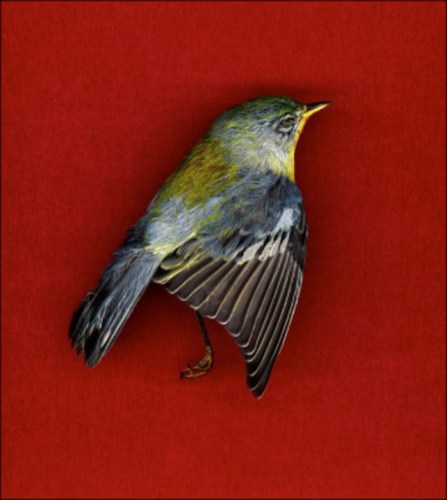
Over the course of his career, Colby Caldwell has turned to an old mistake again and again in the search for new photography. What happened is a bit of personal (and local) lore: Back in 1999, he was converting Super 8 film into digital video. Something went wrong, though, and a routine task generated a new artifact—a glitch file.
He might have easily dragged it into the trash bin without giving it a second thought. Instead, he got curious. The file appeared to be small, not much larger than a thumbnail, but it proved to be almost limitlessly deep. As he surveyed the surface of this digital landscape, he discovered an intricate grid of crisscrossing boulevards and avenues, lava-lamp globules frozen into crystalline arrangements. Caldwell’s resulting investigations for a series called “how to survive your own death” has appeared in some form or another in each of Caldwell’s shows at Hemphill Fine Arts for more than 15 years.
Once again, Caldwell reprises the theme with “how to survive your own death,” his homonymous show at Hemphill. The exhibit is split between Caldwell’s surveys—prints from his dives into the abstract depths of corrupted digital interference—alongside more traditional still-life photos. Together, these series tease out what it means to construct photos. One series is no more natural than the other.
In “untitled (RED),” a lifeless bird appears composed against a deep burgundy backdrop. The photo is rich and gothic, a still-life, or nature-morte, painting that happens to take the form of a photograph. Caldwell echoes several philosophical traditions, including the vanitas studies by 17th-century Dutch painters. His photos linger over every fibrous hair on the dead bird’s wing, a fixation on detail consistent with naturalist traditions from Albrecht Dürer on.
Yet at such exquisite detail, nature winds up looking unnatural in Caldwell’s photos. The fine hairs and feathers of the bird in “untitled (RED)” appear in neon, iridescent, emergency colors. Another photo of a moth, “untitled (WHITE),” yields soft, powdered textures that seem out of this world. How far apart are these from the extraordinary range of colors selected by Caldwell for the various “how to survive your own death” works?
For their part, the “how to survive your own death” photos appear to abide by some unknown (and unknowable) rules. Rows and columns of pigment interlock like cells under a microscope, suggesting an underlying order governing the (dis)array. This is an illusion for a number of reasons. At the most literal level, the file is broken, so its logic might be as well. But for the purposes of photography, these are landscapes like any other: The order is always virtual, asserted over the landscape by the photographer.
One series might appear to show nature as it is; the other, a depiction of the extreme opposite of nature. But Caldwell builds both sets of photos from the same elements: texture, color, and pattern. One of his digital landscapes, “how to survive your own death (223),” captures the resolution at which his corrupted blobs appears to break down into pixelated building blocks. At the other end of the spectrum, Caldwell’s photo of a nest, “mirror, mirror (11),” emphasizes the parts over the whole—twigs and stems and little bits of earth. Hovering over the entire show is death, a cold concept rendered in warm tones, uniting natural and virtual systems.
Caldwell raised all the same issues in “Spent,” a two-part series at Hemphill and Civilian Arts Projects, in 2012. This time around, his investigation is tighter, with more works from the digital series and none of the photos of empty shotgun shells. With this show, he’s achieved parity; he may have even completed this long-running, slow-burn investigation.
One work appears to bring the project full-circle: “how to survive your own death (whole),” a three-by-four-inch print of the corrupted file as it appears without any manipulation. A glitchy block of pixels, attractive on its own merits as a happy accident, but important as a capstone to a years-long inquiry. While Caldwell may not be done printing these bit-works, he has finally finished them, in a sense, by marrying them with his “nature morte” series, by sussing out the patterns—and the noise—that surface in natural selection and techno abstraction alike.